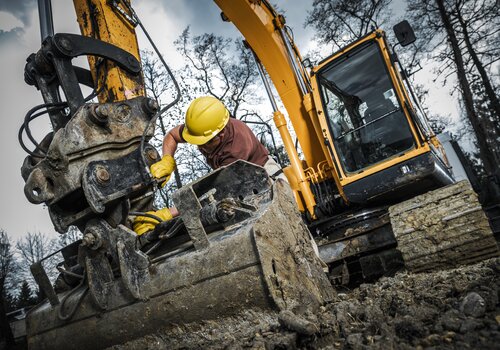We are truly living in an age of innovation, with revolutionary new advances regularly making headlines—and the construction industry is no exception. Innovative building materials are moving the industry forward, helping today’s construction projects achieve higher levels of sustainability, efficiency and durability. Here are seven materials that have recently gained attention for their unique properties and applications.
1. 3D-Printed Building Components
3D printing, also known as additive manufacturing, involves laying down cross-sectional layers of material until a complete object is built. Construction 3D printing typically starts with a digital model, which is then virtually sliced into layers. Using materials such as metal, concrete or polymers, a printing robot follows a preprogrammed path to deposit each layer, tracing the layer and placing the material. Once one layer is complete, it begins the next on top of the first, continuing until the full structure is built. This technique allows for the construction of complex structures with precision and speed, and with less material waste. So far, 3D printing has been used to print houses, offices and other structures.
2. Self-Healing Concrete
This concrete can—amazingly—heal itself by imitating the automatic healing of the human body. The concrete mix is infused with bacteria, and when a crack appears and water seeps in, the bacteria become active. Upon activation, the bacteria consume the nutrients present in the concrete, resulting in calcium carbonate, which fills in and seals the cracks autonomously. Green building approaches like this one are in hot demand—according to a 2024 Deloitte study, building owners and customers are showing greater interest in approaches that address a range of resilience demands.
3. Graphene
Made from pure carbon, graphene is 200 times stronger than steel, and is flexible, durable and light. While the potential uses are still being explored, graphene is already changing the construction industry. It can be used as a durable, protective exterior building coating that improves energy efficiency and fights erosion. And, concrete can be reinforced with graphene, providing additional strength, durability, crack-resistance and moisture-resistance. Graphene has also been used in lime-based paint, which creates a thermal-regulated product, improving insulation.
4. Recycled Materials
With today’s increased focus on sustainability, materials made of recycled products are a win-win. One such product is recycled plastic bricks, which use recycled plastics to create lightweight and durable building blocks. Other examples of materials that can be recycled without significant loss of performance include steel, glass and synthetic gypsum.
5. Hempcrete
Hempcrete is a bio-composite building material that combines the inner woody fibers of the industrial hemp plant with a lime-based binder. This eco-friendly option can be used as an insulator to aid energy-efficiency, although it is not typically used as a structural or weight-bearing element. The lightweight nature of this product can also decrease the embodied energy of a building by reducing the emissions associated with transporting heavy materials. Hempcrete handles moisture well, so it’s a good choice for areas with high humidity.
6. Engineered Timber
This product is created by combining several types of softwood with other materials—like adhesives—to form a solid wood product. Engineered timber has the positive qualities of timber, such as strength, weight and sustainability, but is more stable and can be created in varying sizes. It also minimizes waste compared to traditional wood.
7. Bendable Concrete (Engineered Cementitious Composite)
Engineered cementitious composite (ECC) is a flexible alternative to traditional concrete, and behaves more like metal, especially in the way it responds to loads. ECC is a combination of cementitious binder, PVA fibers and very fine aggregates—this combination is stronger and less brittle than conventional concrete, has been shown to last longer. Also, it doesn’t emit harmful gasses, and can reduce overall costs.
These are only a few examples of innovative products changing the industry. The adoption of these products can help elevate your projects and provide next-level service to clients.
Stay tuned to the CONEXPO-CON/AGG 365 newsletter as we dive into advanced building materials.
Photo credit: MICHAL-ROJEK/ISTOCKPHOTO.COM












